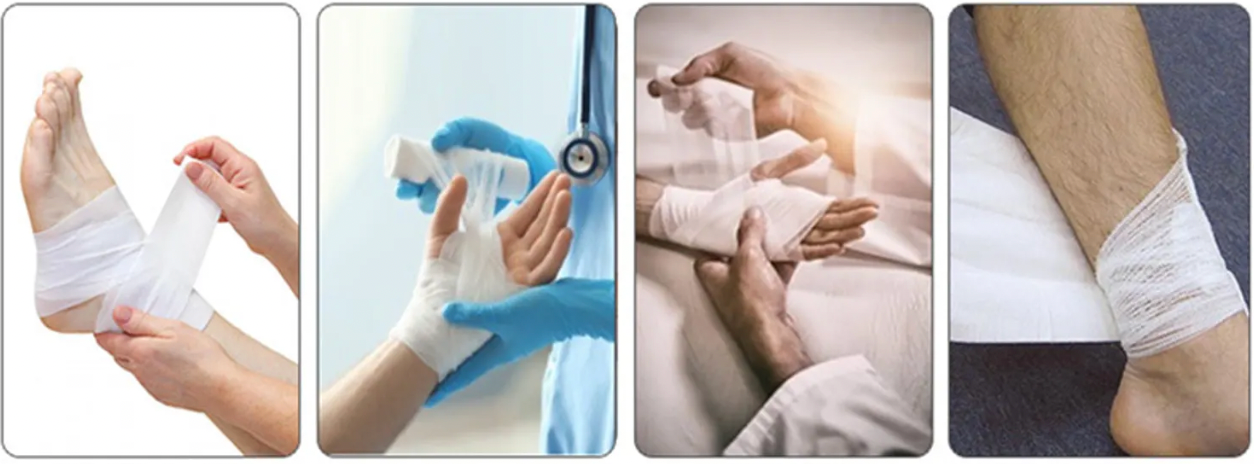
GET A QUOTE
How Long Should You Keep a Bandage on a Wound? A Guide to Optimal Healing
When it comes to wound care, one of the most common questions is: How long should I keep a bandage on? Whether it's a small scrape, a cut, or a minor surgical wound, proper bandaging is essential to protect the area, prevent infection, and promote healing. At Risen Medical, we’re dedicated to providing high-quality first aid supplies, including bandages designed for all types of wounds. Here’s a comprehensive guide on when and how long to keep a bandage on to ensure your wound heals safely and effectively.
Why Cover a Wound with a Bandage?
Before discussing how long to keep a bandage on, it's important to understand why covering a wound is beneficial:
Protection from Contaminants: A bandage helps shield the wound from dirt, bacteria, and other foreign particles that could cause infection.
Moisture Control: Keeping the wound covered retains moisture, which is crucial for faster and more efficient healing.
Prevention of Scabbing: Covering the wound reduces scab formation, which helps avoid scarring and supports new tissue growth.
Factors That Affect Bandage Duration
The length of time you should keep a bandage on depends on several factors, including the type of wound, its location, and how deep it is. Here are some common types of wounds and the recommended bandage duration for each:
Minor Cuts and Scrapes: Small surface wounds usually heal within a few days.
Bandage Duration: Keep the wound covered for the first 24–48 hours to protect it from infection. Afterward, you can keep it uncovered if it’s healing well.
Deep Cuts or Surgical Wounds: Larger wounds take longer to heal and are more susceptible to infection.
Bandage Duration: Keep the bandage on for 48 hours, changing it daily or whenever it gets wet or dirty. For stitches, follow your healthcare provider's recommendations.
Blisters or Burn Wounds: Burns and blisters require extra moisture and protection.
Bandage Duration: For burn wounds, use a specialized, non-stick bandage and keep it on for at least 48 hours. For blisters, cover until the skin regenerates fully to avoid further irritation.
Guidelines for Changing Bandages
To ensure proper wound care, changing the bandage regularly is essential. Here are some general tips on when to change a bandage:
If the Bandage Gets Wet or Dirty: A wet bandage can promote bacterial growth, so replace it immediately if it becomes damp or contaminated.
Once Every 24 Hours: For most wounds, it’s best to change the bandage once a day. This allows you to inspect the wound and clean it, ensuring it’s healing well.
When the Wound Begins to Scab Over: For minor wounds that have formed a protective scab, you may leave the bandage off during the day but cover it at night if needed to prevent accidental scraping.
Should You Keep a Bandage On Overnight?
Whether or not to keep a bandage on overnight depends on the wound type and healing stage:
Fresh Wounds: For fresh or open wounds, keeping a bandage on overnight is a good idea, as it prevents infection and reduces the chance of the wound reopening.
Healing Wounds with Scabs: If the wound is shallow and has started to scab, you may leave it uncovered overnight. However, if you’re prone to accidental scraping, keeping it covered can help avoid setbacks.
Signs It’s Time to Remove the Bandage
Knowing when to remove the bandage for good is key to preventing infection and aiding in a full recovery. Here are some signs your wound may no longer need a bandage:
No Active Bleeding: The wound has stopped bleeding and appears dry.
No Drainage or Redness: There’s no pus, discharge, or redness around the wound, indicating a low risk of infection.
A Protective Scab Has Formed: A stable scab or new tissue is covering the wound, providing natural protection.
Tips for Optimal Healing with Bandages
For the best healing results, follow these tips to ensure your wound heals efficiently with minimal scarring:
Clean and Disinfect the Wound: Before applying a bandage, make sure the wound is clean. Use an antiseptic or saline solution to rinse and disinfect the area.
Use the Right Type of Bandage: Choose a bandage that suits the wound size and location. Risen Medical offers a variety of bandages tailored to different types of injuries.
Apply an Antibacterial Ointment: Applying a thin layer of antibiotic ointment can help prevent infection and speed up healing.
Avoid Reapplying Used Bandages: Always use a fresh bandage to keep the wound sterile and prevent contamination.
Watch for Signs of Infection: If you notice redness, swelling, or warmth around the wound, or if it becomes painful, consult a healthcare professional.
When to See a Doctor
While minor cuts and scrapes often heal with basic first aid, some wounds require medical attention. Contact a healthcare provider if you notice:
Increased Pain or Swelling: These symptoms could indicate an infection.
Pus or Foul Odor: Any drainage or unpleasant smell from the wound should be examined by a doctor.
No Healing After a Week: If a wound shows no signs of healing after several days, it may need professional care.
Signs of Allergic Reaction: If the skin around the wound appears red, itchy, or swollen, you may be reacting to the bandage adhesive or dressing material.
Risen Medical: Your Partner in Wound Care
At Risen Medical, we understand that proper wound care is essential for a quick and safe recovery. That’s why we provide high-quality bandages and first aid supplies designed to protect your wounds and promote healing. With a variety of sizes and types, our bandages are made to meet all your wound care needs.
Explore our full range of first aid products to ensure you have the right supplies on hand to care for wounds effectively at home.


